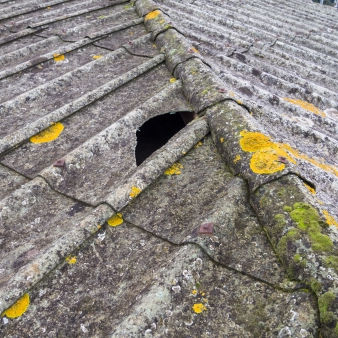06.C.03 Asbestos Abatement Plan (AAP).
An asbestos abatement plan must describe procedures to be followed to protect employees from asbestos hazards while performing work that will disturb ACM.

The plan must address the following:
- A description of each activity where asbestos will be disturbed, including OSHA class of work, equipment required, controls to be used, crew size, job responsibilities, maintenance practices, and locations keyed to the project drawings;
- The method of notification of other employers at the worksite;
- A description of regulated areas, types of containment, decontamination unit plan, and engineering controls;
- Air monitoring plan - personal, environmental and clearance. Employee exposure assessment procedures must address monitoring and documenting employee exposures.
- (1) An initial determination (may be omitted if there is sufficient objective/historical data showing compliance with the requirements);
- (2) Continued exposure monitoring may be required as a result of initial exposure determinations;
- (3) Environmental monitoring must demonstrate the absence of asbestos fiber migration outside the regulated area; and
- (4) Clearance monitoring to document that the area has met specified clearance criteria.
- PPE, including respirators and clothing;
- Housekeeping procedures that address prevention of spread of contamination both in and beyond the regulated area;
- Hygiene facilities and practices;
- CP and employee training required;
- Medical surveillance, as required, to assess exposure and to monitor employee fitness to perform work tasks while wearing PPE to include respiratory protection devices;
- Waste generation, containerization, transportation, and disposal (including recordkeeping); and
- Security, fire, and medical emergency response procedures.
06.D Hot Substances.
Note: For heating devices and melting kettles, see Section 09.E.
06.D.01 Protection from Hot Substances.
Hazards from hot substances include increased inhalation and skin hazards and burns from the heat. When working with hot substances the following must be considered:
- PPE (respirators, gloves, etc.) must be evaluated for efficiency in hot atmospheres and protectiveness from heat as well as the chemical hazard;
- Heat stress precautions and measurements must be taken as required by Section 06.I;
- Location where hot substances are heated must be located away from any ventilation intake air vents. If hot substances are being applied to a roof, the ventilation intake air vents must be temporarily relocated so as to prevent the uptake of the fumes into the building or the work must be completed at a time when the building is not occupied.
Knowledge Check Choose the best answer for the question.
6-7. Why is medical surveillance required as part of the Asbestos Abatement Plan?
You forgot to answer the question!
